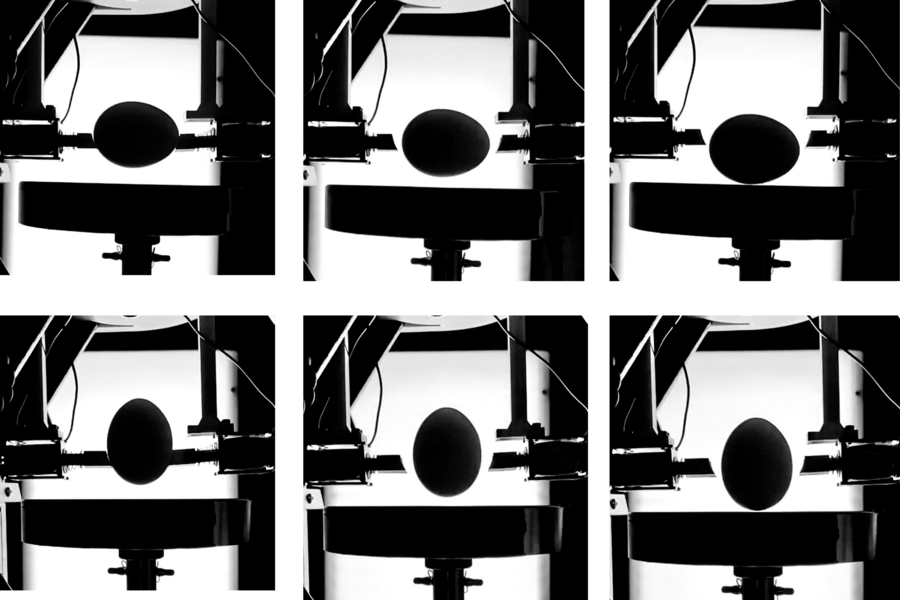
FYI, this doesn't actually apply to cracking an egg for breakfast.
Science classrooms across the globe have been pedalling a lie for decades, maybe even centuries. Eggs are not stronger when dropped on their ends. So say researchers from MIT, who claim that eggs are far stronger on their sides.
Apparently, “sideways eggs bend like shock absorbers, trading stiffness for superior energy absorption.” Apart from overturning a specific assumption about eggs, MIT says the research findings represent a broader lesson. “Even ‘settled’ science can yield surprises when approached with rigor and an open mind,” MIT says.
For the lay egg frier, this all seems pretty counter-intuitive. Surely it’s easier to crack an egg on its side? Instead of accepting that assumption, the MIT team conducted two types of experiments. First, they applied static compression, gradually increasing the force to measure stiffness and toughness. Next were the classic dynamic drop tests, which investigate the likelihood of breaking on impact.
The results found that the same force in terms of compression was required to break an egg both from the sides and the top and bottom. “However, we noticed a key difference in how much the egg compressed before it broke,” says Joseph Bonavia, a PhD candidate who contributed to the work, published yesterday in Communications Physics. “The horizontal egg compressed more under the same amount of force, meaning it was more compliant.”
This suggests that in scenarios where energy absorption is important, such as a drop, eggs should be more resilient landing on their sides. A high-tech drop test—involving solenoids and 3D-printed supports, the better to ensure simultaneous release and consistent egg orientation—was thus devised.
“This confirmed what we saw in the static tests,” says Avishai Jeselsohn, an undergraduate researcher and an author in the study. “Even though both orientations experienced similar peak forces, the horizontal eggs absorbed energy better and were more resistant to breaking.”
All of which means you should start bashing your eggs end-on of a morning, right? Actually, not so much. “Cracking an egg for cooking involves applying locally focused force for a clean break to retrieve the yolk, while its resistance to breaking from a drop involves distributing and absorbing energy across the shell,” says Brendan Unikewicz, another MIT PhD candidate and author.
And so, the MIT team have exploded a long standing scientific misconception but at the same time managed to show how it has absolutely no impact, pun intended, on perhaps the most obvious practical application. As for me, I’m just glad I don’t have to fundamentally rethink the technique for my regular sourdough, avocado, and two fried egg concoction. There’s enough craziness in the world right now without that daily staple being dismantled.
Best CPU for gaming: Top chips from Intel and AMD.
Best gaming motherboard: The right boards.
Best graphics card: Your perfect pixel-pusher awaits.
Best SSD for gaming: Get into the game first.








